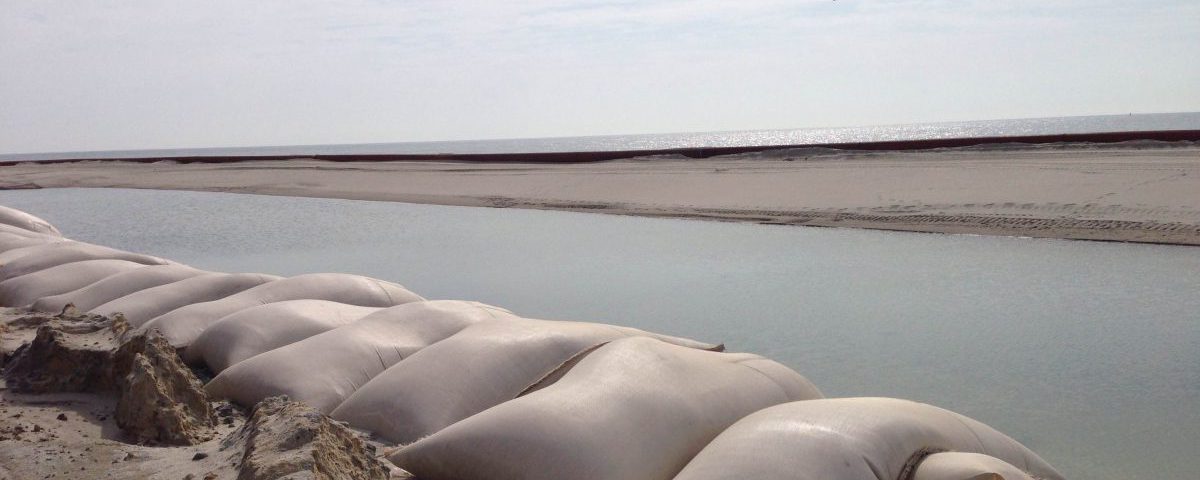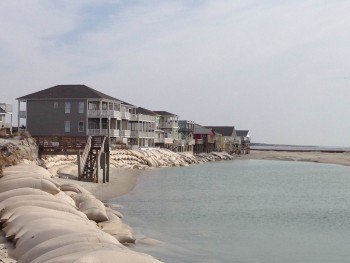
Updates
- In March of 2021, a three-judge panel in the U.S. Court of Appeals for the Fourth Circuit affirmed a lower court’s decision that the U.S. Army Corps of Engineers fairly considered the alternatives included in an environmental impact statement examining the proposed project, allowing the Town to move forward with construction. Read more
- In August 2017, the Southern Environmental Law Center, on behalf of Audubon North Carolina, challenged the Corps’ approval of the terminal groin in court. Read more.
- The Army Corps of Engineers approved Ocean Isle Beach’s terminal groin on Feb. 27, 2017, and the town received a federal permit for the project that same day. Town officials expect construction to begin in November. There are some special permit conditions, including one that puts a moratorium on construction between April 1 and Nov. 15 to protect fish, birds and other protected species during seasonal migration. Read more here.
Background
The issue
The Town of Ocean Isle Beach has proposed to build an expensive 750-foot terminal groin at Shallotte Inlet as a way to control erosion. The North Carolina Coastal Federation advocates for less expensive and gentler methods to decrease erosion. The application for this terminal groin has already been problematic because a Section 7 review was not included in the draft Environmental Impact Statement. A Section 7 review, as required by the federal Endangered Species Act, is typically conducted by the U.S. Fish and Wildlife Service in coordination with the draft EIS.
The draft EIS and final EIS also both failed to thoroughly evaluate all five options — called alternatives — equally. The Corps selected Alternative 5 (the terminal groin) as the preferred option, even though Alternative 4 (channel realignment) would also decrease erosion. Channel realignment is less damaging to habitat and is less expensive than a terminal groin.
 What’s at Stake
What’s at Stake
Damage and erosion: A terminal groin at the east end of the island could impose navigational hazards and influence, in a negative manner, the beach on the other side of the inlet at the west end of Holden Beach.
Critical habitat: The proposed terminal groin could degrade or destroy critical habitat for fish and wildlife. The U.S. Fish and Wildlife expressed its opinion when this project was first planned in 2012, stating that it would not approve the project because it would significantly damage the critical habitat of piping plover and adversely affect sea turtles, sea beach amaranth and several estuarine-dependent marine species.
Public access and recreation: Because of the way terminal groins unnaturally affect beaches, this project would risk the quality of public beach access at the east end of Ocean Isle Beach.
The Cost
This terminal groin, if built, would cost taxpayers at least $45.8 million over 30 years, but it would only protect less than two-dozen oceanfront properties with a tax value of less than $7.5 million. It may also make other undeveloped parcels of land near the inlet more valuable to develop. Taxpayers will pay for designing, permitting, building and maintaining the groin — and the town will become legally and financially responsible if the groin causes damage to either private or publicly owned properties in the future.
Updates
Comment letters & fact sheets from the campaign:
- Read the comment letter on the draft EIS study from the North Carolina Coastal Federation (March 2015).
- Read the comment letter on the draft EIS study from the U.S. Fish and Wildlife Service (March 2015).
- Read the comment letter on the final EIS from the federation (May 2016).
- Read the comment letter on the final EIS from the Southern Environmental Law Center (May 2016).
- Read the comment letter on the final EIS from Audubon North Carolina (May 2016).
- Read the comment letter on the final EIS from the U.S. Fish and Wildlife Service (May 2016).
- Read the Southern Environmental Law Center’s comment letter on the Ocean Isle Beach terminal groin application (July 2016).
Resources:
- Documents from the Army Corps of Engineers, including the final EIS, comments on the final EIS and draft EIS and public notices.
For more background information, check out these articles:
- Coastal Review Online: Corps OKs Ocean Isle’s terminal groin plan
- Coastal Review Online: Groups: Ocean Isle’s groin application flawed
- Comment letter submitted on Ocean Isle Beach’s terminal groin application
- Coastal Review Online: Corps posts final study for Ocean Isle groin
- Coastal Review Online: Groups block Ocean Isle permit application
- Coastal Review Online: Ocean Isle applies for Corps groin permit
- Coastal Review Online: Groin project would benefit one family most directly
